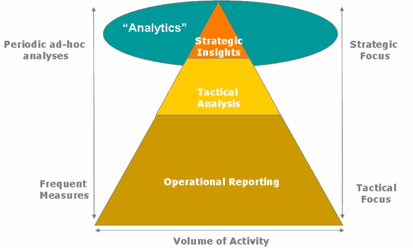 Taking my brain away from my to-do list often entails reading outside the box. I came upon an interesting article in “Scientific American” last month on sudoku puzzles. They have become popular in the last couple of years, and the writer wanted to know why. Something began to feel familiar back in my marketing world.
Taking my brain away from my to-do list often entails reading outside the box. I came upon an interesting article in “Scientific American” last month on sudoku puzzles. They have become popular in the last couple of years, and the writer wanted to know why. Something began to feel familiar back in my marketing world.
The puzzle is a 9-by-9 grid that is mostly blank with a small number of prepopulated digits used to complete the puzzle. You fill in the grid so that every row, every column, and every 3-by-3 box contains the digits 1 through 9. At first, this appears to have a mathematical basis and formulas to solve the puzzle. That couldn’t be further from the truth or even the draw on the game. There’s no math involved. Sudoku.com explains, “The grid has numbers, but nothing has to add up to anything else. You solve the puzzle with reasoning and logic.” The techniques for solving the puzzle include trial and error, reminder marks, elimination and projection, and pattern recognition. Now this is really sounding like my last meeting, where our client was trying to make sense of his customer analysis.
The pursuit of insights from customers, competitors, and your operations turns out to be just like solving a sudoku puzzle. Anthony Power, a colleague of mine with the unique combination of business sense and analytics acumen, recently shared with me that often the best analytics are done first without the numbers. Oddly enough, he too had been thinking about the relationship with sudoku.
Anthony made two points: 1) Information used in analytics is often incomplete and may lead people to the wrong conclusions, and 2) very often the lack of numbers is associated with a perceived lack of value. In my words, your customer database probably looks like a sudoku puzzle with a lot of blank cells in the grid. Anthony added that data are not synonymous with analysis. We both believe that often the most insightful results come from figuring out what data gaps are important to fill.
Knowledge-based marketing is a powerful way to describe how to apply analytics to drive higher performance. At Quaero we define this as “continuous development and application of actionable data-derived customer insights to drive marketing strategies and tactics.” We quickly add that this continuous development comes from
• coupling discipline and intuition to drive strategic analysis—imagining new ways to solve your customers’ needs, address your competitors’ responses, and improve your operational efficiency
• while measuring the performance of tactical and operational analysis to drive predictable results—this is the data-driven discipline to fill in data gaps that matter.

There are three major elements to analytics that drive powerful results:
1) Relevance Carefully define the nature of the specific business problem or opportunity that improved analytics can address. Rapidly assimilate your business goals and their place within broader strategies. Then use that knowledge to select the right data as the source for the analysis, the right tools and techniques to perform the analysis, and the right approach to translating the results into specific and actionable tasks that your team can quickly understand and execute.
2) Appropriate usage Business analysts and modelers sometimes use sophisticated techniques that, if inappropriately applied, present a risk of misinterpretation. A key resource is the individual or partner with combined expertise both in the key techniques and in their appropriate application. This ensures that the right approaches are being used and that the resulting analyses are correctly interpreted.
3) Impact Analytics is a means to an end and not an end in itself. Focus on findings that make an impact and help your team sort through the detail, and focus on those results that are relevant and meaningful to the customer and to the financial bottom line. The goal of analytics is to equip your team to make an informed decision. This has to include understanding when, how, and to what extent the results should be used in business planning.
In another eerie coincidence with sudoku, one of the successful techniques for quickly solving these puzzles is to test the relevance and appropriate usage of logic. I’ll take as a given that the impact of staring at my sudoku puzzle is to relieve my brain from today’s work.
Lane Michel is executive vice president/managing director of the Marketing Performance Management business unit of Quaero Corp., a marketing and technology services provider based in Charlotte, NC. You can reach him at lane@quaero.com.
 Network
Network

